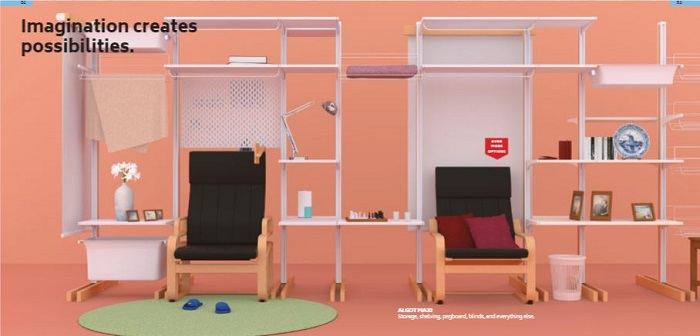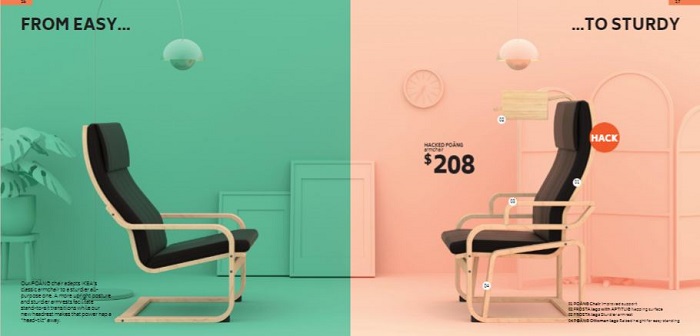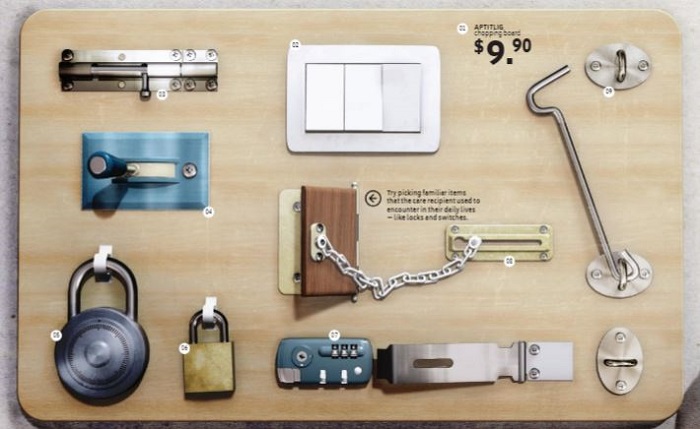A unique collaboration between architects, product and furniture designers, and various healthcare professionals, all brought together by a philanthropic organisation, has resulted in an inspirational DIY manual that aims to help people living with dementia, live better through simple design hacks.
With over 50 million people worldwide living with dementia, it’s important to focus on adapting home environments through creative interventions so that those affected can continue to live in a familiar setting with dignity.
Aptly titled Hack Care, this IKEA-inspired visual catalogue was designed by Lekker Architects in collaboration with industrial design studio Lanzavecchia + Wai for the Singapore-based Lien Foundation. Keeping in mind the daunting challenges faced by people with dementia as well as their caregivers and families, the 240-page book seeks to use simple design innovations to shape environments that empower everyone.
Presented in the form of a typical IKEA catalogue, Hack Care takes a DIY approach, featuring over 50 creative ideas or design hacks that caregivers can use to make adjustments to everyday IKEA furniture and homeware products to create a dementia-friendly home. The book is a visual compendium of tricks and tips complete with instruction manuals, and articles and stories that will help caregivers keep their loved ones engaged, empowered and enabled to age in place in their own home for as long as possible. While the Hack Care book is an independent initiative, IKEA products were chosen for their universal accessibility and ease of use. However, the hacks are not restricted to IKEA products.

The ALGOT MAXI scaffold can be adapted into a cosy alcove or carer's corner to organise caregiving or personal items
“Living with dementia is daunting and our everyday home environments do not always anticipate or meet the unique needs of people battling cognitive and physical frailty. These challenges can be mitigated with good design that is functional, inspirational and accessible, and shaped by the shared experiences of caregivers who have been on a similar journey,” said Lien Foundation CEO Lee Poh Wah.
Combining the design and research of Lekker Architects, with the expertise of product and furniture designers from Lanzavecchia + Wai Design Studio, Hack Care also includes valuable insights provided by the professionals from Alzheimer’s Disease Association (ADA), Brahm Centre and Khoo Teck Puat Hospital along with inputs from personal caregivers.
Lekker Architects director Ong Ker-Shing had her own personal journey as a caregiver for her father, whose fight with dementia began in 2009.
“At home, we observed how my father — through his decline into dementia — was incredibly responsive to changes in his environment, and more importantly, that the manipulation of this environment was really in the hands of us, his family, and not so much in the hands of architects and designers.
“We decided to create a compendium of hack ideas, essays and provocations that would give people insight into dementia and how the environment can play an enormous role in caregiving. The goal was to help non-designers think like designers, to think like hackers, to make tweaks to the environment in order to make a dementia-friendly home. And for Hack Care to ignite their creativity and flexibility in adjusting the physical environment to improve the way they care.”
Design hacks in the book range from adapting IKEA’s classic armchair to simple ones such as using colour in items of everyday use. For instance, the POANG chair is a sturdier version of the IKEA chair with improved support and stronger armrests to assist with stand-sit transitions. The book offers tips on using colours and lights to shape behaviour – suggestions include serving food on blue-coloured plates to increase dietary intake, giving water to drink in a red cup for more consumption, or camouflaging an exit door in a colour similar to its adjacent walls.

The POANG chair features improved support and stronger armrests to assist with stand-sit transitions
Hack Care gives ideas on creating ‘micro-worlds’ – spaces in the home for spending the day, or using IKEA’s ALGOT scaffold to create a carer’s corner where items relevant to caregiving such as lotions, towels or medication can be organised.
‘Fidgeting’ is another therapeutic activity encouraged by Hack Care for dementia care recipients to reduce boredom or soothe feelings of anxiety, and help lower the rate of cognitive decline. Tactile surfaces that help with fidgeting can be easily customised at home using basic tools, with tactile experiences ranging from tracing paths using a finger to moving parts such as beads on a string.

Tactile surfaces that help with fidgeting can be easily customised at home using basic tools
Hack Care serves as a starting point for caregivers to adapt the home environments of people living with dementia, and aims to inspire them to improvise and devise new hacks more uniquely suited to the needs of their loved ones.

